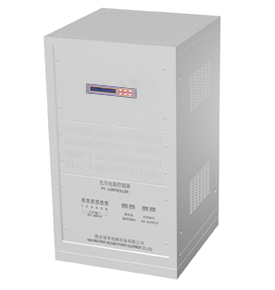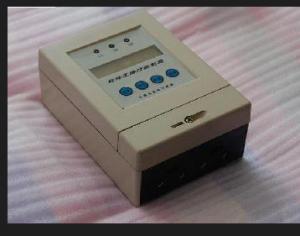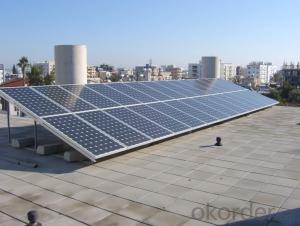Morningstar Solar Charge Controllers - PV Controller from China CNBM GS-50/100/150/200PF
OKorder Service Pledge
OKorder Financial Service
You Might Also Like
Description:
CNBMSOLAR is a world-leading and Vertical integrated manufacturer of high-performance with Silicon,
Wafer, Cells, Modules, which convert sunlight into electricity for residential, commercial, and utility-scale
power generation.
The capacity of CNBMSOLAR is reach to 1GW, and make sure each year our shipment capacity is more
Than 700-800MWs, at the same time, we have set up the largest solar power station with our partner
in Ukraine.
CNBM is a Quality + Service oriented company with“Excellence at Each Step” approach, composed of
the finest components from TUV and IEC-certified partners around the world, CNBM modules consistently
undergo a variety of trials at the company’s Test & Development Centre, ensuring peak performance
capabilities. The company is committed to develop and provide the world with clean and renewable energy
to ease the energy shortages as well as human kind’s impact on the environment.
Data:
Model | GS-50PFL2-R | GS-100PFL4-V | GS-150PFL6-V | GS-200PFL6-V | GS-300PFL6-V | ||
Rated Capacity(A) | 50 | 100 | 150 | 200 | 300 | ||
Max.PV modules output power(kwp) | 10.8 | 21.6 | 32.4 | 43.2 | 64.8 | ||
Rated Voltage(VDC) | 216 | 216 | 216 | 216 | 216 | ||
Max Load Current(A) | 50 | 100 | 150 | 200 | 300 | ||
Max Current on charging(A) | 55 | 110 | 165 | 220 | 330 | ||
Charge Loops | 2 | 4 | 6 | 6 | 6 | ||
Each PV maximum current (A) | 25 | 25 | 25 | 34 | 50 | ||
Max.Open circuitvoltage(VDC) | 500 | 500 | 500 | 500 | 500 | ||
Overcharge protection | 255.6 | 255.6 | 255.6 | 255.6 | 255.6 | ||
Overdischarge protection | Protection | 194 | 194 | 194 | 194 | 194 | |
Resumption | 238 | 238 | 238 | 238 | 238 | ||
Current without load(ma) | <100 | <100 | <100 | <100 | <100 | ||
First low voltage protection for one load | Optional | Optional | Optional | Optional | Optional | ||
Diesel machine start | Optional | Optional | Optional | Optional | Optional | ||
Temperature compensation | Optional | Optional | Optional | Optional | Optional | ||
Display | LCD | LCD | LCD | LCD | LCD | ||
Display content | Battery voltage, loading current, charging current | ||||||
Communication interface(standard) | RS232 | RS232 | RS232 | RS232 | RS232 | ||
Lighting protection device(standard) | Piezo-resistor lighting protection | ||||||
Protection | Overcharge, over discharge, overload, short circuit, reverse polarity, lighting arrestor | ||||||
Protection class | IP20 | IP20 | IP20 | IP20 | IP20 | ||
Voltage descent(VDC) | Between solar battery and lead-acid battery | 0.7 | 0.7 | 0.7 | 0.7 | 0.7 | |
Between lead-acid battery and load | 0.1 | 0.1 | 0.1 | 0.1 | 0.1 | ||
Insulation resistance | ≥50MΩ | ≥50MΩ | ≥50MΩ | ≥50MΩ | ≥50MΩ | ||
Radiator temperature | ≤35℃(rated power reach heat balance) | ||||||
Withstand Voltage | 2500V | 2500V | 2500V | 2500V | 2500V | ||
Noisy(db、1m) | ≤50 | ≤50 | ≤50 | ≤50 | ≤50 | ||
Operating temperature(℃) | -10~+50 | -10~+50 | -10~+50 | -10~+50 | -10~+50 | ||
Storage temperature(℃) | -25~+55 | -25~+55 | -25~+55 | -25~+55 | -25~+55 | ||
Operating humidity | 0~95%(non-condensing) | ||||||
Operating altitude(m) | ≤5000(applied regulation on GB/T3859.2 when sea level above 1000m) | ||||||
Dimension(dxwxh)mm | 350×483×177 | 500×480×850 | 500×600×1100 | 500×600×1100 | 500×600×1100 | ||
Weight(Kg) | 20 | 75 | 110 | 115 | 120 | ||

FAQ:Pls introduce more about CNBM.
CNBM Group is short for China National Building Materials Group Corporation, which is established in 1984 with approval from the State Council
CNBM Group is the largest comprehensive building materials industry group in China
The Group has a total asset of over RMB 360 billion, more than 180,000 employees and 17 subsidiaries
- Q: What is the role of a temperature sensor in a solar controller?
- The role of a temperature sensor in a solar controller is to measure the temperature of various components, such as the solar panels or batteries, and provide this information to the controller. This allows the controller to make adjustments and optimize the performance of the solar system based on the temperature conditions. For example, if the temperature exceeds a certain threshold, the controller may reduce the charging rate to prevent overheating and potential damage. Overall, the temperature sensor helps in maintaining the efficiency and safety of the solar system.
- Q: How does a solar controller handle high current flow from the solar panels?
- A solar controller, also known as a charge controller, plays a crucial role in regulating the flow of current from the solar panels to the battery bank. It ensures that the batteries receive the correct amount of charge and prevents overcharging or damage to the batteries. When high current flows from the solar panels, the solar controller manages this by utilizing a few key mechanisms. Firstly, it employs a pulse width modulation (PWM) or maximum power point tracking (MPPT) technique to efficiently convert the high current generated by the solar panels into the appropriate voltage and current required for charging the batteries. In the case of a PWM controller, it rapidly switches the connection between the solar panels and the battery bank on and off, controlling the flow of current and voltage to match the battery's requirements. This method effectively regulates the charging process and prevents excessive current from reaching the batteries. On the other hand, MPPT controllers employ advanced algorithms and circuitry to track the maximum power point of the solar panels, optimizing the energy conversion process. These controllers can handle high current flow by adjusting the voltage and current to maintain the maximum power output from the panels, resulting in more efficient charging of the batteries. Additionally, solar controllers incorporate various safety features to handle high current flow. They typically have built-in protections such as overcharge protection, short-circuit protection, and reverse polarity protection. These safeguards ensure the system remains safe and prevents any damage to the solar panels, batteries, or other connected components. In summary, a solar controller effectively handles high current flow from the solar panels through techniques such as PWM or MPPT, optimizing the energy conversion process. It also incorporates safety features to protect the system and ensure the batteries receive the appropriate charge without any risk of damage.
- Q: Can a solar controller be used with a solar-powered marine system?
- Yes, a solar controller can be used with a solar-powered marine system. A solar controller regulates the voltage and current from the solar panels to ensure efficient charging and protection of the batteries. It is an essential component for managing the energy flow in a solar-powered marine system, helping to maximize the system's performance and prolong the lifespan of the batteries.
- Q: What is the role of a battery voltage sensor in a solar controller?
- The role of a battery voltage sensor in a solar controller is to monitor the voltage level of the battery connected to the solar system. This helps ensure that the battery is not overcharged or discharged beyond its safe limits. By continuously measuring the battery voltage, the sensor provides crucial information to the solar controller, allowing it to regulate the charging and discharging process, optimize energy flow, and protect the battery from damage.
- Q: Can a solar controller be used with a solar battery charging system?
- Yes, a solar controller can be used with a solar battery charging system. A solar controller is an essential component in regulating the flow of electricity from the solar panels to the batteries. It helps prevent overcharging and damage to the batteries by controlling the voltage and current. Therefore, using a solar controller with a solar battery charging system is crucial for efficient and safe operation.
- Q: How does a solar controller prevent overcharging?
- A solar controller prevents overcharging by regulating the amount of electricity that is sent to the batteries. It monitors the battery voltage and adjusts the charging rate accordingly, ensuring that the batteries do not receive more charge than they can handle.
- Q: How do you troubleshoot common issues with a solar controller?
- To troubleshoot common issues with a solar controller, start by checking the connections and ensuring they are secure and free from corrosion. Next, verify that the solar panels are receiving adequate sunlight and there are no obstructions blocking them. Additionally, inspect the battery to make sure it is properly connected and in good condition. If the controller is not functioning correctly, resetting it or updating its firmware may help. It is also important to consult the controller's manual for specific troubleshooting steps or contact the manufacturer for assistance if necessary.
- Q: Can a solar controller be used with solar panel pergolas?
- Yes, a solar controller can be used with solar panel pergolas. A solar controller helps regulate the charging and discharging of batteries connected to solar panels, ensuring optimal performance and longevity. Therefore, it can be effectively used to enhance the efficiency and functionality of solar panel pergolas by managing the power generated and stored.
- Q: Can a solar controller be used with solar-powered air conditioning systems?
- Yes, a solar controller can be used with solar-powered air conditioning systems. A solar controller is designed to regulate and optimize the charging and discharging of solar batteries. Since solar-powered air conditioning systems utilize solar energy to operate, a solar controller can effectively manage the flow of power to the air conditioning system, ensuring efficient and reliable performance.
- Q: How does a solar controller regulate the charging current?
- The charging current of the solar panel and battery is regulated by a solar controller, which monitors the voltage and current levels. Its purpose is to prevent overcharging of the battery by limiting the current flow when the battery reaches its maximum voltage. To achieve this regulation, the controller employs either pulse width modulation (PWM) or maximum power point tracking (MPPT) techniques. In a PWM solar controller, the controller controls the average charging current by rapidly turning the solar panel's current on and off. When the battery voltage is low, the controller allows a maximum charging current, which gradually decreases as the battery voltage rises. This prevents overcharging and damage to the battery. On the other hand, an MPPT solar controller utilizes a more advanced algorithm to continuously track the maximum power point (MPP) of the solar panel. The MPP represents the optimal voltage and current combination at which the solar panel can deliver its maximum power output. The controller adjusts the charging current accordingly to ensure that the panel operates at its MPP, resulting in maximum power transfer to the battery. Both PWM and MPPT controllers are efficient in regulating the charging current, thus preventing overcharging and extending the battery's lifespan. The choice between the two depends on factors such as the characteristics of the solar panel, battery type, and system requirements.
Send your message to us
Morningstar Solar Charge Controllers - PV Controller from China CNBM GS-50/100/150/200PF
OKorder Service Pledge
OKorder Financial Service
Similar products
Hot products
Hot Searches
Related keywords




























